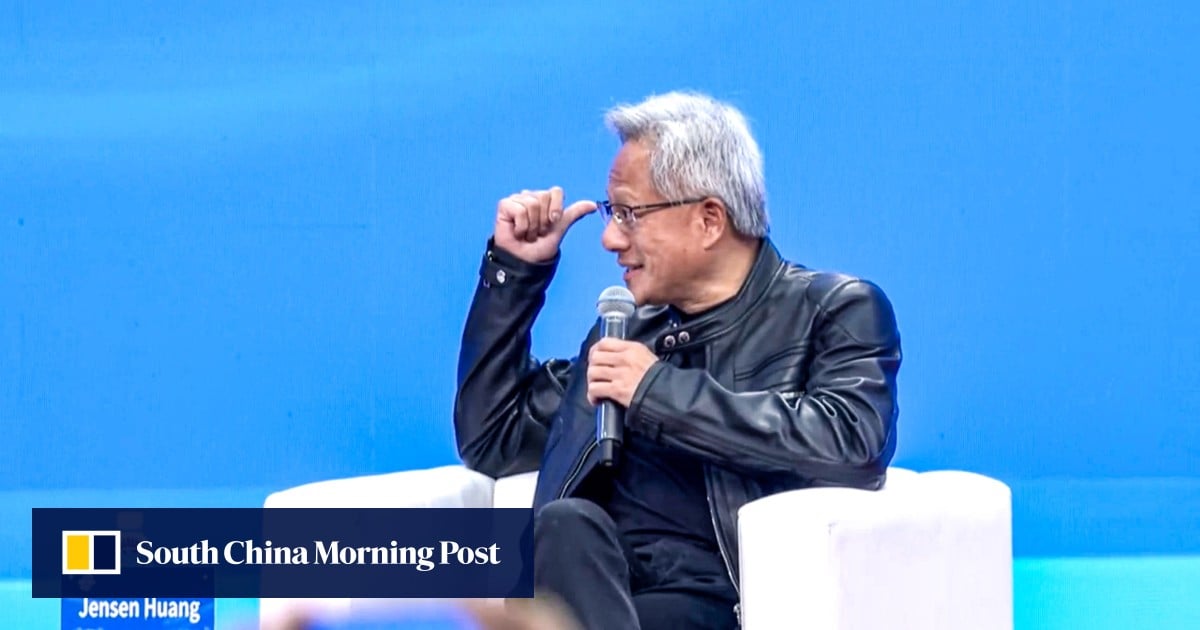E-Commerce Market to Reach USD 12.4 Billion and Growing at a CAGR of 8.42% by 2035
(EMAILWIRE.COM, June 24, 2025 ) The global e-commerce market has undergone an unprecedented transformation over the past decade, emerging as a cornerstone of the global retail landscape. The E-Commerce Market industry is projected to grow from USD 5.09 Billion in 2024 to USD 12.4 Billion by 2035, exhibiting a compound annual growth rate (CAGR) of 8.42% during the forecast period (2025 - 2032). This market includes all online platforms that facilitate the purchase and sale of goods and services, ranging from consumer electronics, fashion, and beauty products to groceries, furniture, and digital content. The expansion of internet connectivity, increasing smartphone penetration, and evolving consumer preferences have been key catalysts in the growth of e-commerce platforms worldwide.
Additionally, the global shift toward digital transactions, coupled with advancements in logistics and supply chain operations, has further enabled the seamless operation of e-commerce platforms, making online shopping more convenient, secure, and personalized than ever before.
Market Key Players:
The e-commerce market is dominated by several multinational corporations, tech giants, and innovative startups that have established significant footprints across various regions. Amazon, Alibaba Group, and eBay are recognized as global leaders, leveraging vast product portfolios, advanced logistics networks, and strong digital infrastructure to maintain their dominance. In North America, Amazon continues to expand its market share through Prime membership, same-day delivery services, and the integration of AI for personalized recommendations. In Asia-Pacific, Alibaba and JD.com are leading players, with Alibaba�s Tmall and Taobao serving as key platforms for both businesses and individual sellers.
In Europe, Zalando and Otto Group hold strong positions in the fashion and lifestyle segments. Other notable players include Rakuten, Walmart (through its e-commerce division), Shopify, Flipkart (India), MercadoLibre (Latin America), and Sea Group�s Shopee (Southeast Asia). These players are continually investing in technology innovations, strategic acquisitions, and global expansion to enhance user experience and operational efficiency.
Download Exclusive Sample Copy of This Report Here: https://www.marketresearchfuture.com/sample_request/18845
Market Segmentation:
The e-commerce market is broadly segmented based on product type, business model, platform type, payment mode, and end-user demographics. In terms of product type, the market encompasses electronics, fashion and apparel, beauty and personal care, home and kitchen, groceries, books, furniture, and others. Electronics and fashion continue to dominate due to high consumer demand and rapid product turnover. Based on business models, the market is classified as B2C (business to consumer), B2B (business to business), and C2C (consumer to consumer). The B2C segment remains the most prominent, driven by retail giants and individual sellers offering products directly to consumers. Platform-wise, the market is categorized into desktop websites, mobile apps, and social commerce platforms.
Mobile commerce, in particular, has gained significant traction due to increased mobile usage and app-based loyalty programs. In terms of payment mode, the segmentation includes credit/debit cards, digital wallets, net banking, and cash on delivery. Digital wallets such as PayPal, Apple Pay, and Google Pay are increasingly preferred for their convenience and security. Demographic segmentation includes age groups, gender, and income levels, with millennials and Gen Z contributing significantly to the market's growth due to their tech-savvy nature and preference for digital shopping experiences.
Buy this Premium Research Report at: https://www.marketresearchfuture.com/checkout?currency=one_user-USD&report_id=18845
Market Drivers:
Several factors are fueling the rapid growth of the global e-commerce market. One of the primary drivers is the increasing penetration of smartphones and internet connectivity, which has enabled access to online marketplaces even in remote areas. Technological advancements such as artificial intelligence, machine learning, augmented reality, and blockchain have significantly enhanced the e-commerce ecosystem by improving user experience, personalization, inventory management, and security.
Another major driver is the evolution of digital payment systems and the global shift toward cashless transactions, making online purchases quicker and more secure. The COVID-19 pandemic also played a pivotal role in accelerating e-commerce adoption, as lockdowns and social distancing norms led consumers to shift from brick-and-mortar stores to online shopping platforms. Furthermore, changing consumer lifestyles, rising disposable incomes, and the demand for convenience and time-saving solutions have increased reliance on e-commerce. Brands are now focusing on omnichannel retail strategies, blending online and offline experiences, which has further contributed to the market�s growth.
Market Opportunities:
The e-commerce market presents a vast array of opportunities for growth, innovation, and market expansion. One of the most promising areas lies in untapped and underpenetrated rural regions, especially in emerging economies where internet infrastructure is gradually improving. Localized platforms that cater to regional languages, payment preferences, and delivery methods are well-positioned to gain traction in these markets. Another significant opportunity exists in the realm of social commerce, where platforms like Instagram, TikTok, and Facebook enable direct product discovery and purchases through social interaction.
Artificial intelligence and big data analytics also open new avenues for hyper-personalized marketing, real-time consumer insights, and demand forecasting. Subscription-based e-commerce models, particularly in categories like meal kits, beauty boxes, and curated fashion items, are gaining popularity due to convenience and consistent quality. Additionally, the rise of green consumerism and the demand for sustainable products offer opportunities for eco-conscious brands to differentiate themselves. Cross-border e-commerce is another promising domain, allowing businesses to access international markets with relative ease through global shipping and multi-currency payment solutions.
Regional Analysis:
The e-commerce market demonstrates varied growth patterns and market dynamics across different regions. North America remains one of the most mature and technologically advanced markets, with the United States leading in both revenue and innovation. High consumer trust in online shopping, coupled with a well-established digital infrastructure and strong logistics networks, continues to fuel growth in this region. In Europe, countries like the United Kingdom, Germany, and France have embraced e-commerce owing to their affluent consumer base, high internet penetration, and robust regulatory frameworks that ensure consumer protection.
The Asia-Pacific region represents the fastest-growing e-commerce market, driven by the massive population, increasing smartphone adoption, and rising disposable incomes. China stands out as the global e-commerce leader, followed by India, Japan, and South Korea, all of which are witnessing rapid digitization and online retail expansion. Latin America, particularly Brazil and Mexico, is showing promising growth supported by improved logistics, digital payments, and a growing middle class. The Middle East and Africa are also emerging markets, with countries such as the UAE, Saudi Arabia, and South Africa experiencing rapid digital transformation and investments in e-commerce infrastructure.
Browse In-depth Market Research Report: https://www.marketresearchfuture.com/reports/e-commerce-market-18845
Industry Updates:
The e-commerce industry is continuously evolving with frequent technological updates, mergers, acquisitions, and strategic collaborations shaping the competitive landscape. In recent years, companies have heavily invested in AI-driven tools for personalized shopping experiences, chatbots for customer support, and virtual try-on features for categories like fashion and beauty. Logistics innovations such as drone deliveries, autonomous vehicles, and smart warehouses are being tested and implemented to enhance delivery speed and accuracy. Notably, Amazon has expanded its drone delivery program in select areas of the United States and is testing AI in its fulfillment centers to improve efficiency. Strategic acquisitions also play a key role in market expansion, with major players acquiring smaller platforms or tech startups to diversify their portfolios and strengthen regional presence.
For instance, Shopify has launched various integrations and tools aimed at empowering small businesses to scale online. Additionally, e-commerce regulations around data privacy, consumer protection, and cross-border trade are becoming more stringent, prompting companies to adopt transparent and secure practices. Sustainability trends are also influencing the industry, with several platforms committing to eco-friendly packaging, carbon-neutral shipping, and ethical sourcing.
Explore Our Latest Trending Reports:
Augmented Reality and Virtual Reality Market: https://www.marketresearchfuture.com/reports/augmented-reality-virtual-reality-market-6884
Data Governance Market: https://www.marketresearchfuture.com/reports/data-governance-market-2362
High Performance Computing Market: https://www.marketresearchfuture.com/reports/high-performance-computing-market-2698
GPS Tracker Market: https://www.marketresearchfuture.com/reports/gps-tracker-market-7017
About Market Research Future:
At Market Research Future (MRFR), we enable our customers to unravel the complexity of various industries through our Cooked Research Report (CRR), Half-Cooked Research Reports (HCRR), Raw Research Reports (3R), Continuous-Feed Research (CFR), and Market Research & Consulting Services.
MRFR team have supreme objective to provide the optimum quality market research and intelligence services to our clients. Our market research studies by products, services, technologies, applications, end users, and market players for global, regional, and country level market segments, enable our clients to see more, know more, and do more, which help to answer all their most important questions.
You may also like...
Diddy's Legal Troubles & Racketeering Trial

Music mogul Sean 'Diddy' Combs was acquitted of sex trafficking and racketeering charges but convicted on transportation...
Thomas Partey Faces Rape & Sexual Assault Charges

Former Arsenal midfielder Thomas Partey has been formally charged with multiple counts of rape and sexual assault by UK ...
Nigeria Universities Changes Admission Policies

JAMB has clarified its admission policies, rectifying a student's status, reiterating the necessity of its Central Admis...
Ghana's Economic Reforms & Gold Sector Initiatives

Ghana is undertaking a comprehensive economic overhaul with President John Dramani Mahama's 24-Hour Economy and Accelera...
WAFCON 2024 African Women's Football Tournament

The 2024 Women's Africa Cup of Nations opened with thrilling matches, seeing Nigeria's Super Falcons secure a dominant 3...
Emergence & Dynamics of Nigeria's ADC Coalition

A new opposition coalition, led by the African Democratic Congress (ADC), is emerging to challenge President Bola Ahmed ...
Demise of Olubadan of Ibadanland
Oba Owolabi Olakulehin, the 43rd Olubadan of Ibadanland, has died at 90, concluding a life of distinguished service in t...
Death of Nigerian Goalkeeping Legend Peter Rufai

Nigerian football mourns the death of legendary Super Eagles goalkeeper Peter Rufai, who passed away at 61. Known as 'Do...




